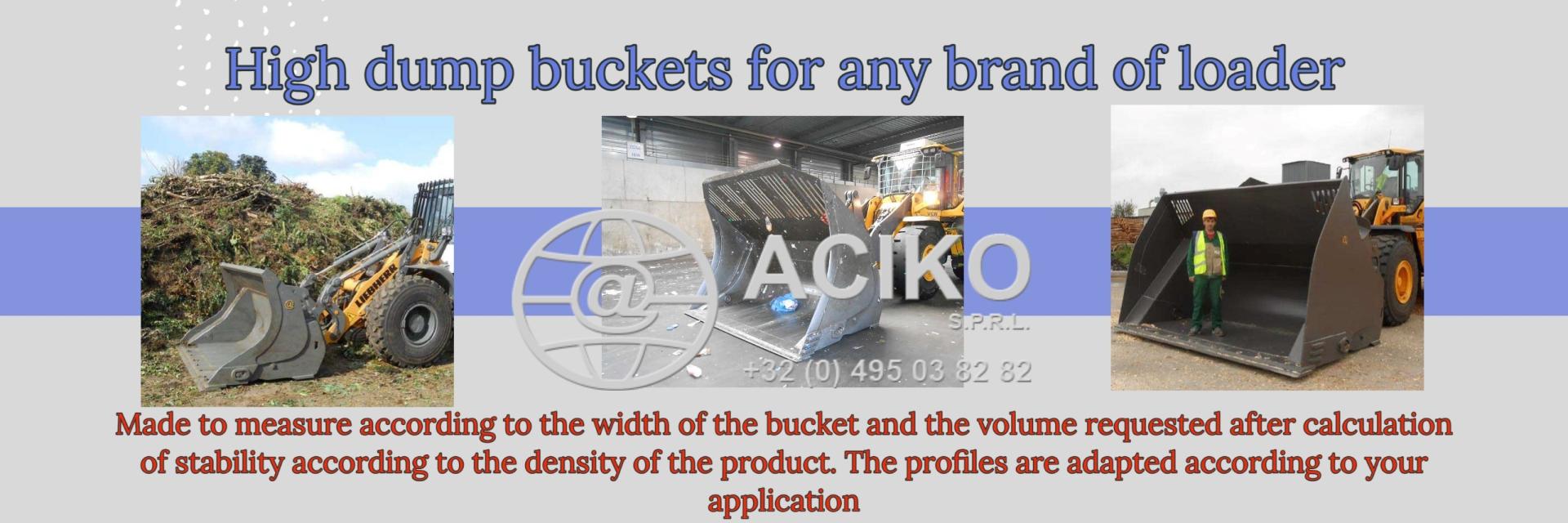Researchers explore Concrete from Ancient Rome to transform modern industry
 11/05/23-FR-English-NL-footer
11/05/23-FR-English-NL-footer
Des chercheurs explorent le béton de la Rome antique pour transformer l'industrie moderne
 Dr. Monday Uchenna Okoronkwo recently received the National Science Foundation’s Faculty Early Career Development Program award. Photo by Michael Pierce/Missouri S&T.
Dr. Monday Uchenna Okoronkwo recently received the National Science Foundation’s Faculty Early Career Development Program award. Photo by Michael Pierce/Missouri S&T.
Un chercheur de l'Université des sciences et technologies du Missouri cherche à résoudre les problèmes de demain en utilisant la chimie d'un passé lointain.
Le Dr Monday Uchenna Okoronkwo, professeur adjoint de génie chimique et biochimique à S&T, cherche à imiter la chimie et la composition du béton romain antique tout en appliquant la technologie moderne pour le rendre encore meilleur.
"Chaque technologie que vous regardez ces jours-ci découle de ce qui existait déjà", déclare Okoronkwo. "Vous pouvez décider d'abandonner l'ancienne technologie et de recommencer, mais je pense que la chose la plus sage à faire est d'apprendre de ce qui est bon de l'ancienne technologie, de rejeter ce qui est mauvais, puis de combiner le bien des approches plus anciennes et modernes pour générer le futur. »
C'est exactement ce que fait Okoronkwo avec ses recherches concrètes actuelles, et il a récemment été sélectionné pour le prix du programme de développement de carrière en début de carrière (CAREER) de la National Science Foundation et recevra environ 675 000 $ pour soutenir son projet.
Le Dr Monday Uchenna Okoronkwo a récemment reçu le prix du programme de développement de carrière en début de carrière de la National Science Foundation.
Selon le site Web de la NSF, le programme CAREER "offre les prix les plus prestigieux de la NSF pour soutenir les professeurs en début de carrière qui ont le potentiel de servir de modèles académiques dans la recherche et l'éducation et de faire progresser la mission de leur département ou organisation. ”
Okoronkwo affirme que ses recherches ont le potentiel de transformer l'industrie du ciment. Son travail pourrait rendre le béton plus durable tout en réduisant les émissions de carbone.
« Notre objectif est de concevoir une nouvelle génération de matériau cimentaire », dit-il. « Le béton romain peut résister aux environnements agressifs. De nos jours, nous avons maintenant des additifs chimiques que nous pouvons ajouter pour augmenter la flexibilité et les propriétés d'écoulement du béton pour le rendre encore meilleur. Ce projet vise à exploiter les meilleures propriétés des approches anciennes et modernes.
La clé pour réduire les émissions de carbone, qui est également la clé pour imiter l'ancien béton romain, réside dans le liant cimentaire à base de strätlingite qu'Okoronkwo développera.
Avec ce type de liant, Okoronkwo dit que le pourcentage de chaux par rapport à l'alumine et à la silice nécessite environ la moitié de ce qui est utilisé lors du développement de liants pour les bétons modernes, et il serait fabriqué à des températures beaucoup plus basses que le liant de ciment Portland traditionnel.
Avoir moins de chaux et utiliser des températures plus basses entraînera moins d'émissions de carbone tout au long du processus.
Okoronkwo prévoit de développer des versions de ce ciment pour des utilisations marines et terrestres.
« Il y aura tellement d'applications possibles pour ce nouveau ciment », dit-il. « Envisagez les utilisations militaires, les systèmes hydroélectriques offshore, la construction sous-marine, les ponts et les quartiers exposés aux ouragans et aux conditions météorologiques extrêmes. Ce nouveau matériau peut être aussi résistant que celui utilisé par les anciens Romains il y a 2 000 ans, mais il sera encore meilleur grâce à la technologie et aux méthodes modernes que nous pouvons désormais appliquer.
Okoronkwo dit qu'il se sent honoré de recevoir ce financement et qu'il est ravi de se mettre au travail.
« Je suis reconnaissant à la NSF pour ce prix », dit-il. "C'est une occasion rare de recevoir ce prix, et je suis heureux d'avoir obtenu ce soutien pour travailler sur ce projet." Pour en savoir plus sur les programmes de génie chimique et biochimique de S&T, visitez chemeng.mst.edu.
NJC.© Info Missouri University of Science and Technology
-----------------------------------------------------------------------------------------------------------------
 11/05/23-English
11/05/23-English
Researchers explore Concrete from Ancient Rome to transform modern industry
 Dr. Monday Uchenna Okoronkwo recently received the National Science Foundation’s Faculty Early Career Development Program award. Photo by Michael Pierce/Missouri S&T.
Dr. Monday Uchenna Okoronkwo recently received the National Science Foundation’s Faculty Early Career Development Program award. Photo by Michael Pierce/Missouri S&T.
A researcher at Missouri University of Science and Technology is looking to solve the problems of tomorrow by using chemistry from the distant past.
Dr. Monday Uchenna Okoronkwo, assistant professor of chemical and biochemical engineering at S&T, is researching how to mimic the chemistry and composition of ancient Roman concrete while also applying modern technology to make it even better.
“Every technology that you look at these days stems from what has already existed,” Okoronkwo says. “You can decide to scrap old technology and start anew, but I think the wisest thing to do is learn from what is good from the old technology, discard what is bad, and then combine the good from both the older approaches and modern approaches to generate the future.”
That is exactly what Okoronkwo is doing with his current concrete research, and he was recently selected for the National Science Foundation’s Faculty Early Career Development (CAREER) Program award and will be provided with about $675,000 to support his project.
Dr. Monday Uchenna Okoronkwo recently received the National Science Foundation’s Faculty Early Career Development Program award.
According to the NSF website, the CAREER program “offers the NSF’s most prestigious awards in support of early-career faculty who have the potential to serve as academic role models in research and education and to lead advances in the mission of their department or organization.”
Okoronkwo says his research has the potential to transform the cement industry. His work could make concrete more durable while also cutting back on carbon emissions.
“Our target is to design a new generation of cementitious material,” he says. “Roman concrete can withstand aggressive environments. In the modern day, we now have chemical additives we can add to increase the flexibility and the flow properties of the concrete to make it even better. This project is aimed at harnessing the best properties of both ancient and modern approaches.”
The key to having lower carbon emissions, which is also the key to mimicking the ancient Roman concrete, lies in the strätlingite-based cementitious binder that Okoronkwo will develop.
With this type of binder, Okoronkwo says the percentage of lime to alumina and silica requires approximately half of what is used when developing binders for modern concretes, and it would be made at much lower temperatures than the traditional Portland cement binder.
Having less lime and using lower temperatures will lead to less carbon being emitted throughout the process.
Okoronkwo plans to develop versions of this cement for both marine and land uses.
“There will be so many possible applications for this new cement,” he says. “Consider military uses, offshore hydroelectric power systems, underwater construction, and bridges and neighborhoods exposed to hurricanes and extreme weather. This new material can be as resilient as what was used by the ancient Romans 2,000 years ago, but it will be even better thanks to the modern technology and methods we can now apply.”
Okoronkwo says he feels honored to receive this funding, and he is excited to get to work.
“I am thankful to NSF for this award,” he says. “It is a rare opportunity to receive this award, and I am glad to have gotten this support to work on this project.” To learn more about S&T’s chemical and biochemical engineering programs, visit chemeng.mst.edu.
NJC.© Info Missouri University of Science and Technology
-----------------------------------------------------------------------------------------------------------
 11/05/23-NL
11/05/23-NL
Onderzoekers onderzoeken beton uit het oude Rome om de moderne industrie te transformeren
 Dr. Monday Uchenna Okoronkwo recently received the National Science Foundation’s Faculty Early Career Development Program award. Photo by Michael Pierce/Missouri S&T.
Dr. Monday Uchenna Okoronkwo recently received the National Science Foundation’s Faculty Early Career Development Program award. Photo by Michael Pierce/Missouri S&T.
Een onderzoeker aan de Missouri University of Science and Technology probeert de problemen van morgen op te lossen door chemie uit het verre verleden te gebruiken.
Dr. Monday Uchenna Okoronkwo, assistent-professor chemische en biochemische technologie bij S&T, onderzoekt hoe de chemie en samenstelling van oud Romeins beton kan worden nagebootst en tegelijkertijd moderne technologie kan worden toegepast om het nog beter te maken.
"Elke technologie waar je tegenwoordig naar kijkt, komt voort uit wat al bestond", zegt Okoronkwo. “Je kunt besluiten oude technologie te schrappen en opnieuw te beginnen, maar ik denk dat het verstandigste is om te leren van het goede van de oude technologie, het slechte weg te gooien en vervolgens het goede van zowel de oudere benaderingen als de moderne benaderingen te combineren. de toekomst genereren.”
Dat is precies wat Okoronkwo doet met zijn huidige concrete onderzoek, en hij werd onlangs geselecteerd voor de prijs van het Faculty Early Career Development (CAREER) Program van de National Science Foundation en zal ongeveer $ 675.000 ontvangen om zijn project te ondersteunen.
Dr. Monday Uchenna Okoronkwo ontving onlangs de prijs van het Faculty Early Career Development Program van de National Science Foundation.
Volgens de NSF-website biedt het CAREER-programma “de meest prestigieuze prijzen van de NSF ter ondersteuning van beginnende faculteiten die het potentieel hebben om te dienen als academische rolmodellen in onderzoek en onderwijs en om vooruitgang te boeken in de missie van hun afdeling of organisatie. ”
Okoronkwo zegt dat zijn onderzoek het potentieel heeft om de cementindustrie te transformeren. Zijn werk kan beton duurzamer maken en tegelijkertijd de CO2-uitstoot verminderen.
"Ons doel is om een nieuwe generatie cementachtig materiaal te ontwerpen", zegt hij. “Romeins beton is bestand tegen agressieve omgevingen. Tegenwoordig hebben we nu chemische additieven die we kunnen toevoegen om de flexibiliteit en de vloei-eigenschappen van het beton te vergroten om het nog beter te maken. Dit project is gericht op het benutten van de beste eigenschappen van zowel oude als moderne benaderingen.”
De sleutel tot een lagere koolstofemissie, wat ook de sleutel is om het oude Romeinse beton na te bootsen, ligt in het op strätlingiet gebaseerde cementgebonden bindmiddel dat Okoronkwo zal ontwikkelen.
Met dit type bindmiddel zegt Okoronkwo dat het percentage kalk tot aluminiumoxide en silica ongeveer de helft vereist van wat wordt gebruikt bij het ontwikkelen van bindmiddelen voor modern beton, en dat het bij veel lagere temperaturen zou worden gemaakt dan het traditionele bindmiddel van portlandcement.
Door minder kalk te gebruiken en lagere temperaturen te gebruiken, wordt tijdens het hele proces minder koolstof uitgestoten.
Okoronkwo is van plan versies van dit cement te ontwikkelen voor zowel zee- als landgebruik.
"Er zullen zoveel mogelijke toepassingen zijn voor dit nieuwe cement", zegt hij. “Denk aan militair gebruik, offshore waterkrachtsystemen, onderwaterconstructies en bruggen en buurten die zijn blootgesteld aan orkanen en extreme weersomstandigheden. Dit nieuwe materiaal kan net zo veerkrachtig zijn als wat de oude Romeinen 2000 jaar geleden gebruikten, maar het zal nog beter zijn dankzij de moderne technologie en methoden die we nu kunnen toepassen.”
Okoronkwo zegt dat hij zich vereerd voelt om deze financiering te ontvangen, en hij staat te popelen om aan het werk te gaan.
"Ik ben NSF dankbaar voor deze onderscheiding", zegt hij. "Het is een zeldzame kans om deze prijs te ontvangen, en ik ben blij dat ik deze steun heb gekregen om aan dit project te werken." Ga voor meer informatie over de chemische en biochemische engineeringprogramma's van S&T naar chemeng.mst.edu.
NJC.© Info Missouri University of Science and Technology
-----------------------------------------------------------------------------------------------------------------
Date de dernière mise à jour : 10/05/2023
















